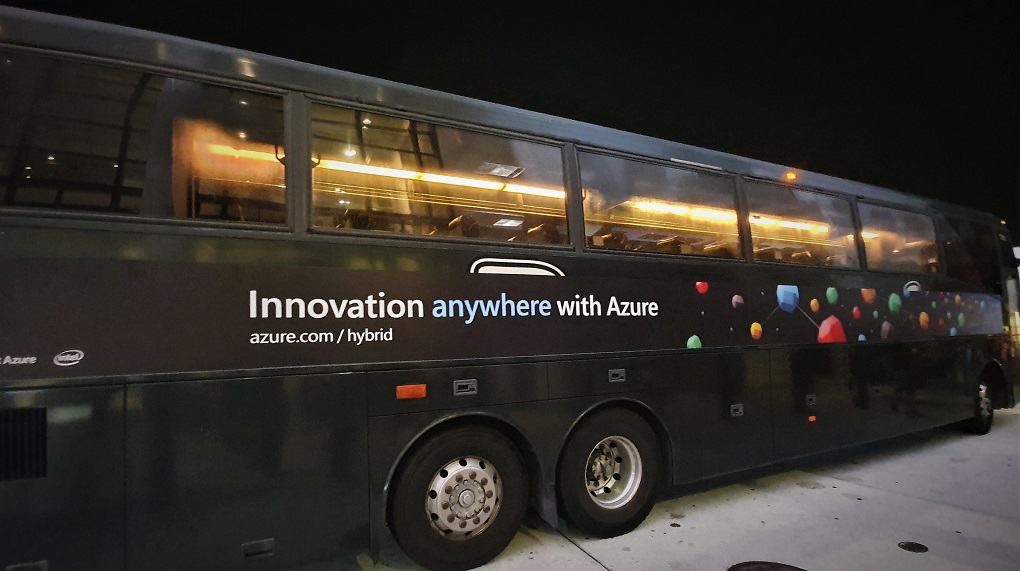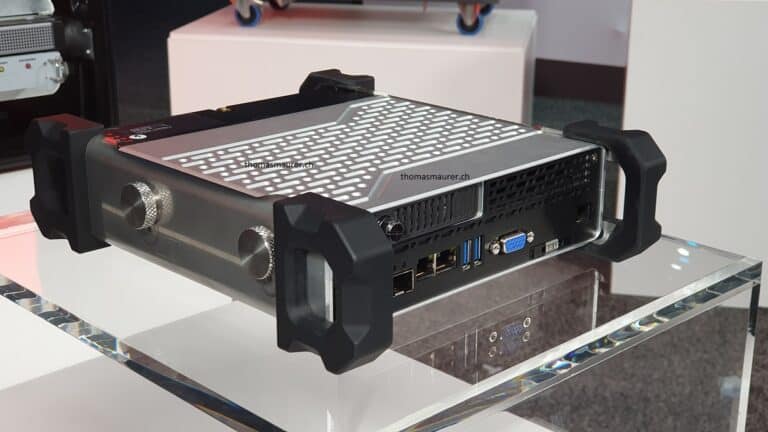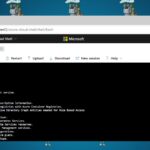Last week at the Microsoft Ignite 2019 conference, the Azure team announced a lot of new updates. One of the significant focus topics at this year’s Ignite was the investment in the Azure Hybrid Cloud offerings. Starting with the buses driving attendees to the conference venue, over the Ignite keynotes, to the expo floor and breakouts, Hybrid Cloud was everywhere. Today, organizations rely on a hybrid technology approach to take advantage of utilizing cloud innovation in combination with their on-premises investments. Azure is Hybrid by design, and Microsoft is continuing the investment in our hybrid cloud technologies with the announcements of Azure Arc (link) and the new Azure Stack portfolio (link). I already was able to get an early look at Azure Arc for Servers, in this post, I am going to focus on the new Azure Stack portfolio with Azure Stack Hub, Azure Stack Edge, and Azure Stack HCI.
At and after Microsoft Ignite 2019, I got a lot of questions around the Azure Stack announcements. So in this blog, I want to give you a quick overview of that, and if you want to know more, check out the blog post from Talal Alqinawi, Senior Director Azure Marketing.
The Azure Stack family now consists of three members, Azure Stack Hub, formerly known as Azure Stack, Azure Stack HCI, and Azure Stack Edge (formerly known as Azure Databox Edge). This offers customers new capabilities, form factors, and solutions in the Azure Stack portfolio, to ensure that the customer has the right solutions for their edge infrastructure.
Azure Stack Hub
Azure Stack Hub (formerly known as Azure Stack) will continue to be the cloud-native offering for enterprise and public sector customers, especially those interested in operating a cloud environment that is disconnected from public internet or meeting regulatory and compliance requirements. It will continue to bring Azure services to locations where you need them. The Azure Stack Hub team also announced some new capabilities and features, which the team is working on:
- Working on support for N-Series virtual machines (VMs) which included GPU support
- Event Hubs Public Preview in 2020
- Azure Stream Analytics Public Preview in 2020
- General Availability (GA) of Kubernetes on Azure Stack with Azure Kubernetes Service (AKS) engine to automate the creation, update, and scaling of Kubernetes clusters.
- Windows Virtual Desktop (WVD) Private Preview
- Azure Data Services with Azure Arc Private Preview
Azure Stack HCI
A couple of months ago, I already wrote a blog post about Azure Stack HCI, which enables customers to run a highly efficient hyper-converged virtualization infrastructure. From small 2-node deployments up to high-performance and high capacity clusters, the Azure Stack HCI catalog offers solutions for every scenario. Together with Windows Admin Center, you can also easily connect Azure hybrid solutions and services. With the new automated deployment of Azure Stack HCI clusters, it becomes even easier to deploy new installations. I had the chance to talk about this new feature with Cosmos Darwin on the Microsoft Ignite Live stage, and you can watch the recording here. You can also learn more about the new Azure Stack HCI, version 20H2 here on my blog.
I also have an article on ITOpsTalk.com about how Azure Stack HCI fits into the Azure Hybrid Cloud offering.
Azure Stack Edge
Azure Stack Edge (formerly known as Azure Databox Edge) is an Azure managed appliance that brings the compute, storage, and intelligence of Azure to the edge.
This is a first-party appliance which customer can order and run as an Azure service with no upfront costs (billed monthly with your Azure bill). In addition to the name change, the Azure Stack Edge team also announced that it soon will be supporting new compute and AI features and capabilities like:
- Virtual machines on Azure Stack Edge
- Kubernetes clusters
- NVIDIA GPU support
- Support for high-availability
The Azure Stack Edge will also be available in a rugged version as well as in a battery-powered form-factor that can be carried in a backpack.
Next to talking to Cosmos Darwin about Azure Stack HCI, I was also able to have Stephanie Krieger and Chris Dickens on the Microsoft Ignite Live stage to talk about Azure Stack Edge. You can watch the recording here.
Hybrid Cloud in combination with Azure Arc
In conjunction with Azure Arc, which brings Azure services and management to any infrastructure. With Azure Arc, you can deploy Azure Data services on any Kubernetes cluster. Azure Arc and Azure Stack portfolio are complementary.
You can combine the benefits of Azure Arc with Azure Stack portfolio where Azure Arc can manage virtual machines, containers, and run Azure Data Services on Azure Stack portfolio of validated and integrated systems while leveraging the compute and cloud capabilities of Azure Stack.
If you want to know more about Azure Arc, check out my blog post, Azure Arc – Cloud-native Management for Hybrid Cloud, or you can watch my Microsoft Ignite 2019 session about Hybrid Cloud Management.
I hope this gives you an overview of the new Azure Stack portfolio, which was announced at Microsoft Ignite 2019. If you have any questions, feel free to leave a comment.
Tags: Azure, Azure Arc, Azure Stack, Azure Stack Edge, Azure Stack HCI, Azure Stack HUb, Edge, HCI, Hub, Hybrid, Hybrid Cloud, Ignite, Microsoft, Microsoft Ignite, Microsoft Ignite 2019, Overview Last modified: November 20, 2020















